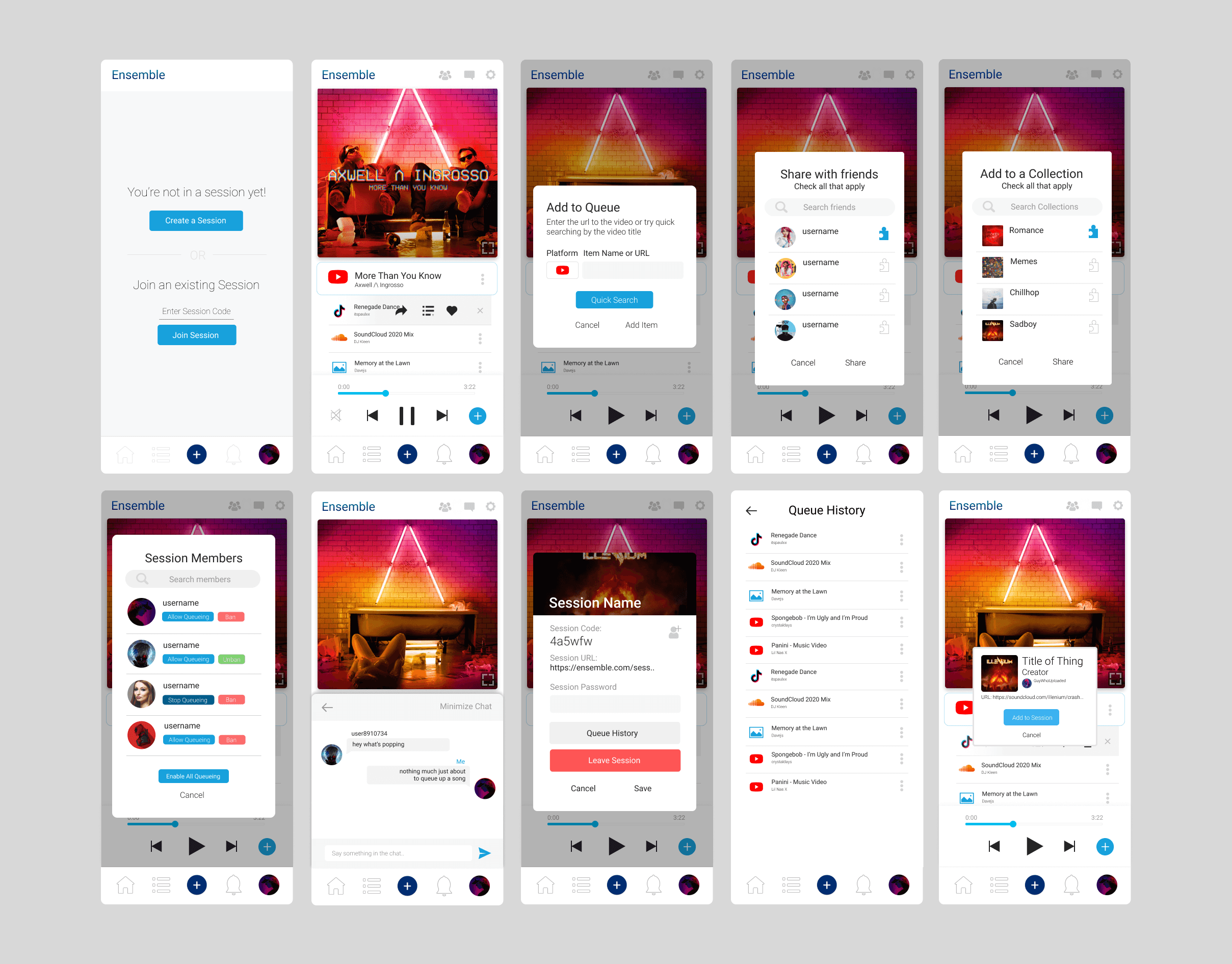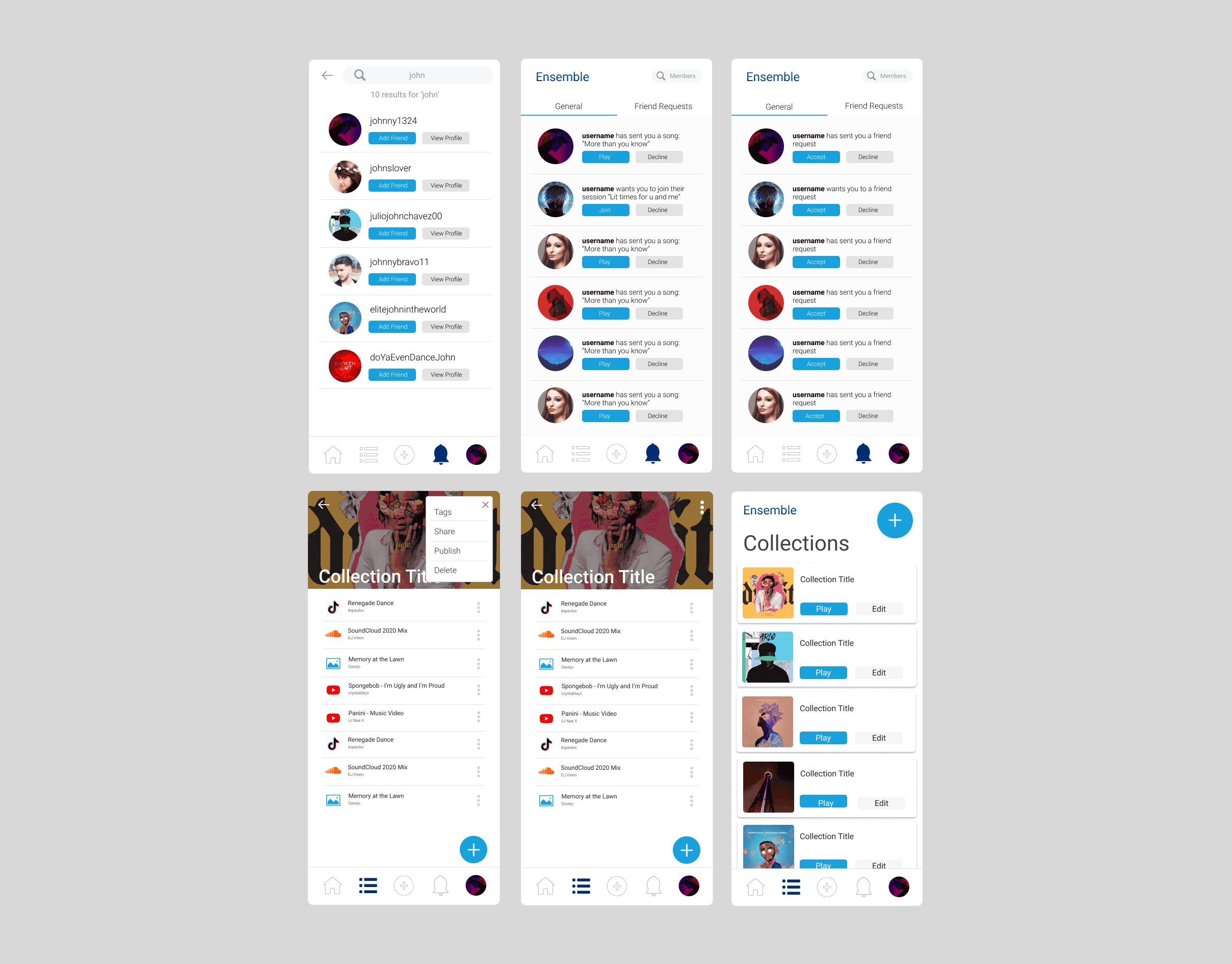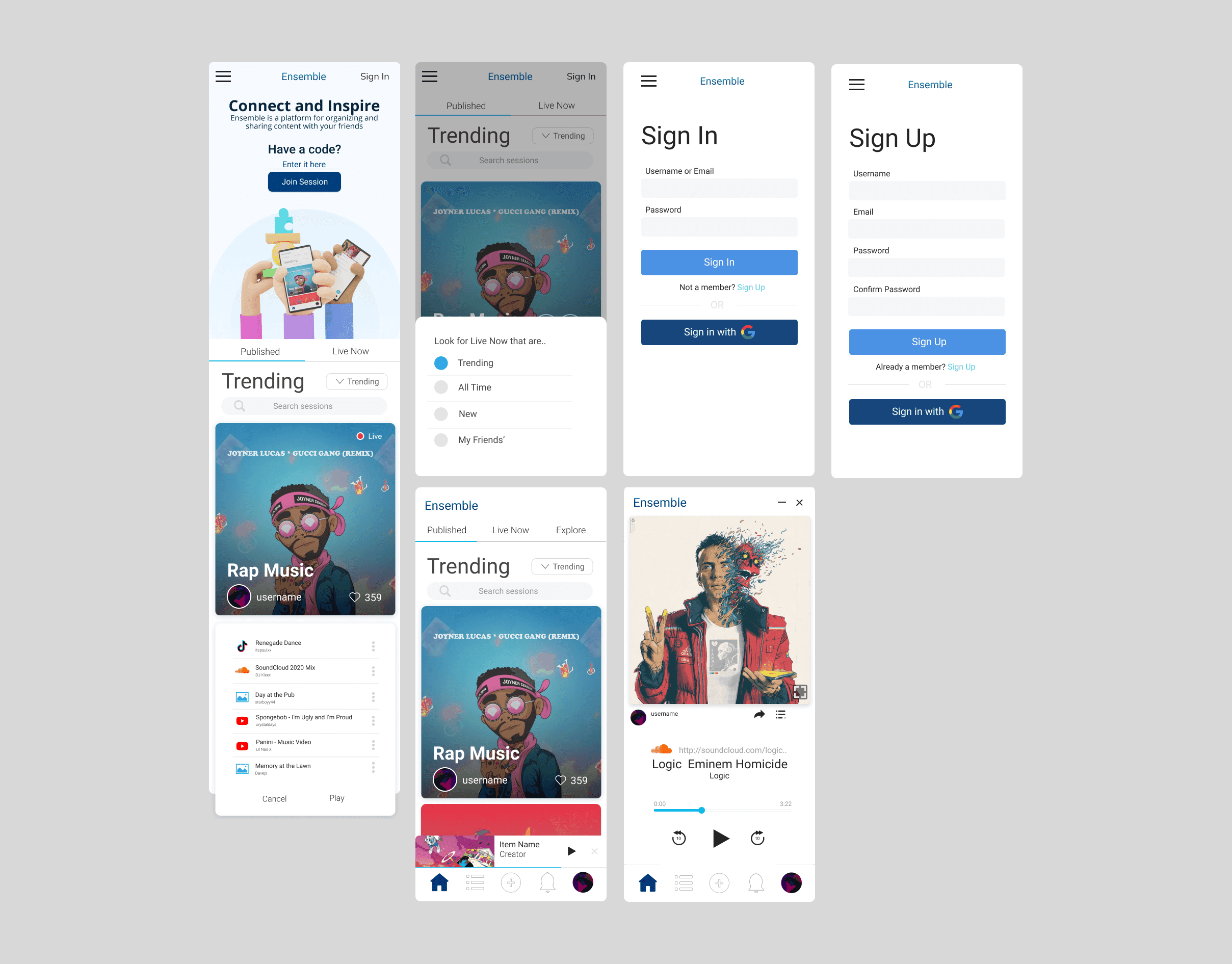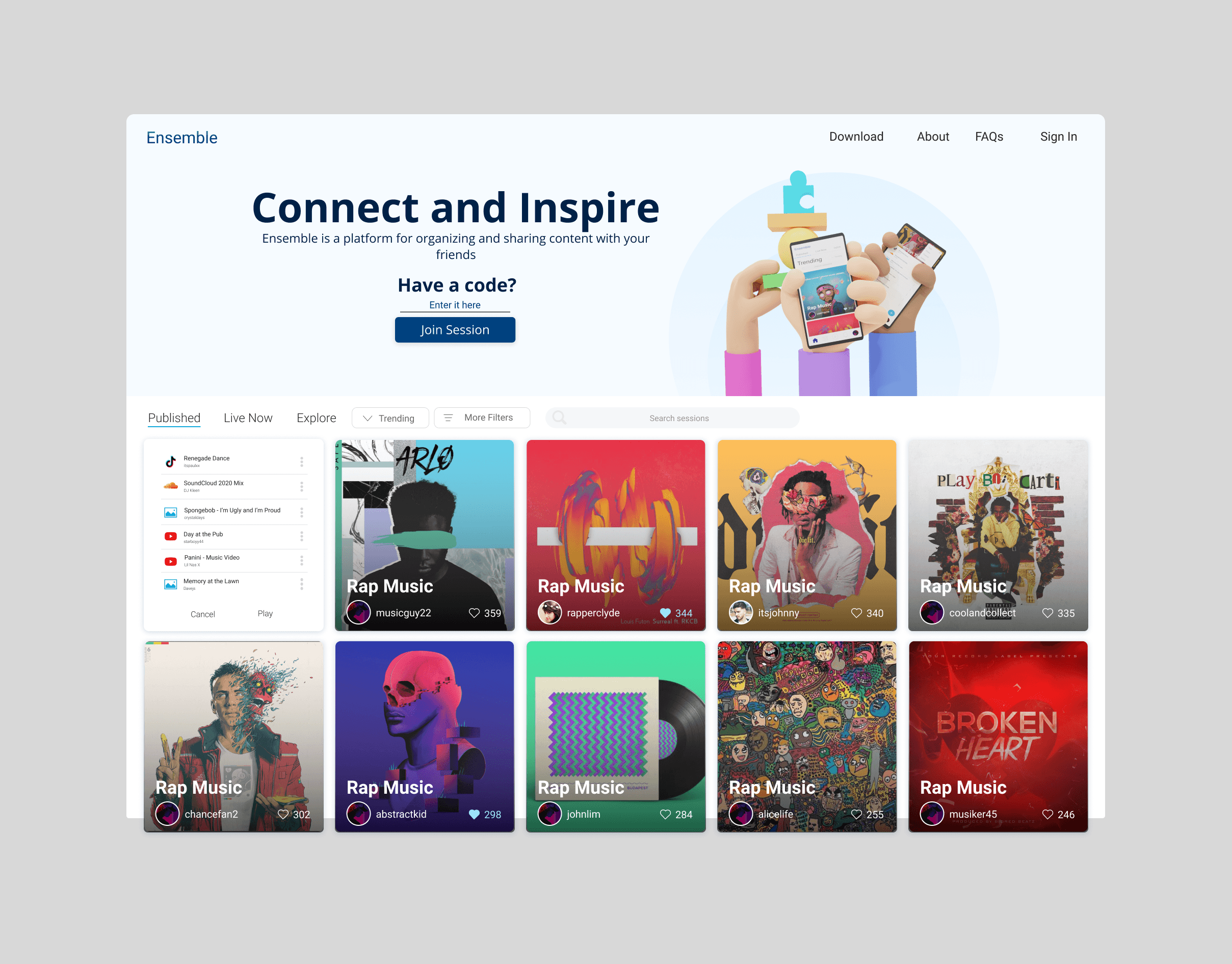Case Study: Ensemble - A Collaborative Media Streaming Platform
Project Duration
June 2019 - June 2021Roles
Front-End Engineer, Designer
Problem Statement
The problem was the inability to agree on what to watch or listen to while collaborating with friends in different settings such as living rooms or parties. The solutions available were either too complicated or inadequate. Therefore, Ensemble was created to provide an organized and simple way to stream music, videos, and photos with others in a shared environment.
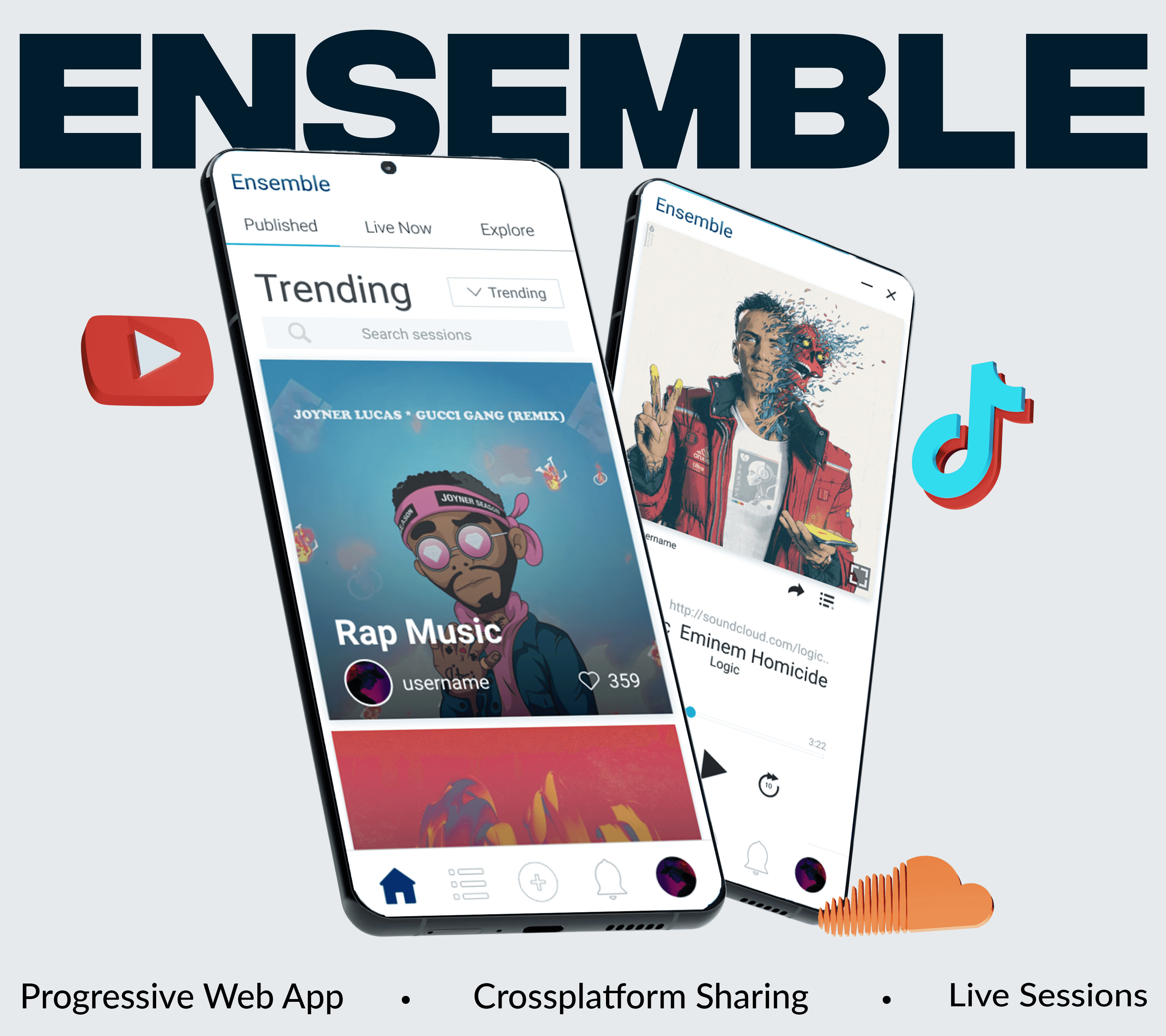
Project Structure
Ensemble was developed from scratch and followed four primary stages: Discover, Define, Develop, and Deliver.
Discovery
The discovery stage involved exploration, research, and gathering insights. To understand the competition, we conducted research on existing group listening and watch-party apps. The research revealed that many existing apps lacked critical functionalities necessary for a complete user experience, such as requiring users to sign up, missing features, and complicated interfaces.
User Interviews
To dig deeper, we conducted user interviews with family, friends, and colleagues. The user interviews revealed that sharing items from different platforms can be annoying because it requires opening another app to view them, apps allow collaboration but not to their fullest potential, and some apps required payment or an account, which was a major turnoff for many people. It became evident that users wanted a centralized location where they could consume all types of content without having to click on links or switch between apps.
Definition
The definition stage involved identifying the key problem and area to focus on and then developing a clear objective. Based on multiple studies and statistics, we identified that the primary demographic of users would be young people aged between 18 and 29, such as college students.
Design Principles
Based on the research what would be our user base, we developed three guiding principles: make it easy for users to start using the site for free, have a central location for shared content, and communicate Ensemble's mission statement to "Connect and Inspire" at all times. The home page and session page were identified as the key pages to focus on.
Development
During the development stage, we created prototypes for the home and session pages with a mobile-first approach. The home page contained a field where users could enter a session code to join a session, while the session page provided a queue where users could remove or add items, such as videos, pictures, and songs. Registered users could share these items with other registered members or add them to a playlist.
Delivery
The delivery stage involved launching the app and testing it in the market. Ensemble was launched, and user feedback was gathered to improve the app's features and functionalities. Users found Ensemble easy to use, and it provided a centralized location for all types of media. The app was successful, with many users enjoying it during parties and hangouts with friends.
Conclusion
Ensemble provided a collaborative media streaming platform for users to enjoy all types of media together in one place. The app was designed to make it easy for users to start and use the site for free, with a central location for shared content, and to communicate Ensemble's mission statement to "Connect and Inspire" at all times. The successful launch of Ensemble demonstrated that it fulfilled a need in the market and provided a valuable solution to the problem of collaborative media streaming.
